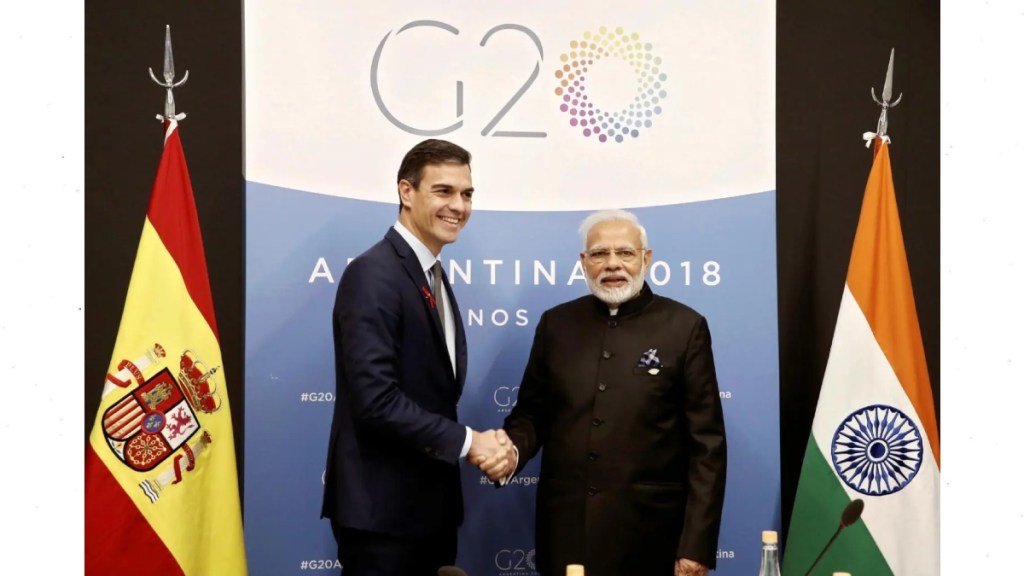As the countdown to significant visits from European leaders unfolds, the stage is set for substantial developments in India’s defence sector. The German Chancellor, Olaf Scholz, has just concluded his visit, paving the way for Spanish President Pedro Sánchez’s arrival on October 27, 2024. A crucial focus of these visits will be the finalization of Project 751, where the competition for the construction of six new conventional submarines pits Germany’s Thyssenkrupp Marine Systems (tkMS) against Spain’s Navantia. This decision carries implications for India’s naval capabilities and strategic partnerships.
Why German Submarines Hold the Edge
Sources within the Indian Navy suggest a strong preference for the tkMS-designed submarines over those proposed by Navantia. The tkMS offering is based on the well-established HDW Class 214, known for its operational reliability across several navies worldwide. This submarine design incorporates advanced technologies, including a sophisticated Air Independent Propulsion (AIP) system, Lithium-Ion batteries, and enhanced stealth features, positioning it as a superior choice for the Indian Navy.
The customization potential for the tkMS design is particularly appealing. According to insiders, the German company is committed to tailoring the submarine to meet the specific operational needs of the Indian Navy. This commitment includes the incorporation of a Fuel Cell AIP, ensuring extended operational capabilities and a more efficient energy system.
The move toward indigenous production is a cornerstone of this project, as it aligns with India’s strategic aim to reduce long-term dependency on foreign Original Equipment Manufacturers (OEMs). The transfer of technology embedded in the strategic partnership model guarantees that the design will not just be handed over but will also be adapted to local manufacturing capabilities at Mumbai’s Mazagon Dockyards Limited (MDL). This strategic approach is designed to foster self-reliance in defence manufacturing, allowing India to establish its own robust defence industrial base.
Strategic Shifts and Defence Partnerships
ermany’s renewed focus on India reflects broader geopolitical currents and a desire to deepen defence ties. As voiced by sources familiar with the negotiations, “The German government’s intensified interest in India is evident as it pushes for deeper ties, especially in defence collaborations.” This sentiment underscores the belief that the partnership between tkMS and MDL is a vital step toward a long-term defence relationship between the two countries.
Foreign Secretary Vikram Misri, during a special briefing in New Delhi on Friday (Oct 25, 204) following Prime Minister Modi’s talks with Chancellor Scholz, acknowledged the ongoing assessments by the Ministry of Defence regarding the submarine offers. Misri stated, “This is an ongoing technical, financial, and commercial process, so it has not yet been completed. Obviously, yes, the German side is interested in this issue… but it would be very difficult to say anything until a commercial agreement is concluded.”
Misri further highlighted the encouraging developments in defence cooperation, noting the commitment of both nations to establish a sustainable defence industrial cooperation roadmap. This includes initiatives such as placing a German liaison officer at the Indian Ocean Region Information Fusion Centre in Gurugram and supporting India’s observer status in the Eurodrone program.
The Spanish Perspective
While Germany positions itself strongly in the competition, the arrival of President Sánchez marks a significant moment for Spain. His visit, the first by a Spanish leader to India in 18 years, illustrates Spain’s intent to solidify its defence and trade relationships with India. Spain’s Navantia has partnered with L&T for Project 75 (I), showcasing its AIP system, which has been successfully tested by the Spanish Navy. The first submarine equipped with this system is expected to be operational by 2026.
Sánchez’s agenda in India also includes discussions beyond defence, focusing on sectors such as aviation and trade. A highlight will be the inauguration of the Final Assembly Line Plant for C295 aircraft in Vadodara, showcasing Spain’s commitment to India’s self-reliance in defence production.
According to the Ministry of External Affairs (MEA), “President Sánchez’s visit will be an opportunity to review the entire gamut of our bilateral relations and further deepen the partnership across various sectors, including trade and investment, innovation, infrastructure, and defence.”
Looking Ahead: The Implications of the Decision
As the Indian Navy evaluates both offers, the decision regarding Project 75 (I) will serve as a critical indicator of India’s strategic direction in defence procurement. With the Indian Navy having completed its evaluation trials for the AIP systems from both tkMS and Navantia, the final choice will shape not only the future of India’s submarine capabilities but also the trajectory of its defence relationships with both Germany and Spain.
Choosing tkMS and MDL could signify a commitment to fostering deeper technological collaboration and a more robust indigenous defence manufacturing base, ultimately enhancing India’s strategic autonomy. Conversely, a decision in favor of Navantia could reflect an intention to diversify partnerships within the European defence landscape.
Bottomline
The impending decision on the submarine project is more than just a procurement choice; it is a strategic pivot in India’s defence narrative. The German option presents advanced technology, tailored design, and a clear path toward self-reliance, while the Spanish offering seeks to strengthen traditional ties and expand cooperation across multiple sectors. As both nations vie for this lucrative project, the stakes could not be higher for India’s maritime defence capabilities and its broader geopolitical aspirations.


